
Simple Rules: How to Thrive in a Complex World
by
Donald Sull
and
Kathleen M. Eisenhardt
Published 20 Apr 2015
These and other insights are at the heart of what author Michael Lewis famously described as moneyball. Moneyball, the book and movie, is the ultimate sports fairy tale, with the A’s playing the role of Cinderella. But unlike Cinderella, the A’s did not live happily ever after. Moneyball’s simple rules were just too easy to copy. By 2004, a free-spending team, the Boston Red Sox, co-opted the A’s principles and won the World Series for the first time since 1918. In contrast, the A’s went into decline, and by 2007 they were losing more games than they were winning. Moneyball had struck out. Enter Farhan Zaidi, the A’s director of baseball operations since 2009, who was named assistant general manager in 2014.
…
The five tools are described more fully in Michael Lewis’s book Moneyball. [>] One was a how-to rule: Alexander Smith, “Billy Beane’s Finest Work Yet: How the Oakland A’s Won the AL West,” BleacherReport.com, October 19, 2012, http://bleacherreport.com/articles/1377486. [>] The two of them: Andrew Brown, “A’s Platoon System New Moneyball,” SwinginA’s.com, September 20, 2013, http://swinginas.com/2013/09/23. [>] In 2013, they added: Rob Neyer, “Those A’s Found Another Edge?”, December 31, 2013, Baseball Nation, accessed March 22, 2014, http://www.sbnation.com/2013/12/31/5261940/oakland-athletics-moneyball-platoon-switch-hitters-flyball. [>] In fact, the A’s: Andrew Koo, “A Decade after Moneyball, Have the A’s Found a New Market Efficiency?
…
.” [>] Since they are dormant: Ibid. [>] The right choice is often: For a review of relevant research, see Nicolaj Siggelkow, “Change in the Presence of Fit: The Rise, the Fall and the Renaissance of Liz Claiborne,” Academy of Management Journal, 44, no. 4 (2001): 838–57. [>] Alderson, a former Marine: Michael Lewis, Moneyball: The Art of Winning an Unfair Game (New York: W. W. Norton, 2004). [>] These and other insights: Ibid. [>] Enter Farhan Zaidi: Susan Slusser, “A Beautiful Mind,” San Jose Mercury News, February 5, 2014. As this book went into production, the L.A. Dodgers hired away Zaidi to be their general manager, to the dismay of A’s fans. [>] As his boss, Billy Beane: Ibid. [>] After the collapse: David Laurila, “Sloan Analytics: Farhan Zaidi on A’s Analytics,” accessed September 27, 2014, http://www.fangraphs.com/blogs/sloan-analytics-farhan-zaidi-on-as-analytics/print/. [>] At Zaidi’s urging: Slusser, “A Beautiful Mind.”
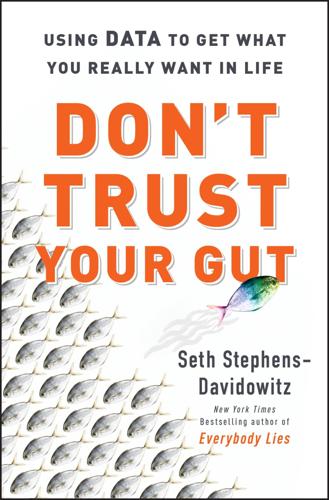
Don't Trust Your Gut: Using Data to Get What You Really Want in LIfe
by
Seth Stephens-Davidowitz
Published 9 May 2022
Activity Predicted Happiness Rank of Activity Actual Happiness Rank of Activity Difference Intimacy/Making Love 1 1 0 Pet Care/Playing with Pets 2 15 −13 Hobbies/Arts/Crafts 3 11 −8 Talking/Chatting/Socializing 4 7 −3 Theater/Dance/Concert 5 2 3 Singing/Performing 6 6 0 Sleeping/Resting/Relaxing 7 27 −20 Match/Sporting Event 8 13 −5 Computer Games/iPhone Games 9 20 −11 Watching TV/Film 10 19 −9 Birdwatching/Nature Watching 11 8 3 Eating/Snacking 12 21 −9 Other Games/Puzzles 13 16 −3 Hunting/Fishing 14 9 5 Gardening 15 5 10 Sports/Running/Exercise 16 4 12 Childcare/Playing with Children 17 14 3 Meditating/Religious Activities 18 12 6 Reading 19 24 −5 Exhibition/Museum/Library 20 3 17 Drinking Tea/Coffee 21 23 −2 Browsing the Internet 22 29 −7 Drinking Alcohol 23 10 13 Cooking/Preparing Food 24 22 2 Texting/Email/Social Media 25 30 −5 Listening to Speech/Podcast 26 25 1 Gambling/Betting 27 18 9 Traveling/Commuting 28 32 −4 Shopping/Errands 29 17 12 Care or Help for Adults 30 36 −6 Washing/Dressing/Grooming 31 26 5 Smoking 32 28 4 Working/Studying 33 37 −4 In a Meeting, Seminar, Class 34 33 1 Admin/Finances/Organizing 35 34 1 Housework/Chores/DIY 36 31 5 Waiting/Queueing 37 35 2 Sick in Bed 38 38 0 Notes Introduction: Self-Help for Data Geeks unconventional daters’ success: Christian Rudder, Dataclysm: Who We Are (When We Think No One’s Looking) (New York: Broadway Books, 2014). career trajectories of hundreds of thousands of painters: Samuel P. Fraiberger et al., “Quantifying reputation and success in art,” Science 362(6416) (2018): 825–29. Oakland A’s: Michael Lewis, Moneyball: The Art of Winning an Unfair Game (New York: Norton, 2004). “more Moneyball than the Moneyball A’s themselves”: Jared Diamond, “How to succeed in baseball without spending money,” Wall Street Journal, October 1, 2019. track the trajectory of every shot: Ben Dowsett, “How shot-tracking is changing the way basketball players fix their game,” FiveThirtyEight, August 16, 2021, https://fivethirtyeight.com/features/how-shot-tracking-is-changing-the-way-basketball-players-fix-their-game/.
…
Such shifts are justified in mounds of data that predict where particular players are most likely to hit the ball. The numbers tell baseball teams that, even though it looks wrong, it is right. If we take a Moneyball approach to life, we might similarly expect to find that some seemingly odd decisions—call them the infield shifts of life—are justified. We’ve already discussed a couple. Shaving your head or dyeing your hair blue to get more dates is an infield shift of life. Here’s another one, uncovered in the Big Data of sales. Suppose you are trying to sell something. This is an increasingly common experience. As the author Daniel Pink put it in his book To Sell Is Human, whether we are “pitching colleagues, persuading funders, [or] cajoling kids . . . we’re all in sales now.”
…
And, when he became general manager of the Oakland A’s, he chose to run his team using the principles of sabermetrics. The results were remarkable. As famously told in the book and movie Moneyball, the Oakland A’s, despite having one of the lowest payrolls in baseball, reached the playoffs in 2002 and 2003. And the role of analytics in baseball has exploded since then. The Tampa Bay Rays, who have been called “a team more Moneyball than the Moneyball A’s themselves,” reached the 2020 World Series despite the third-lowest payroll in baseball. Further, the principles of Moneyball and the powerful underlying idea—that data can be useful in correcting our biases—have transformed many other institutions.
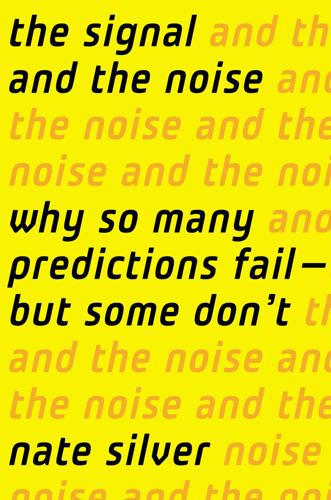
The Signal and the Noise: Why So Many Predictions Fail-But Some Don't
by
Nate Silver
Published 31 Aug 2012
This doesn’t make him the most generous human being, but it is exactly what he needs in order to play second base for the Boston Red Sox, and that’s the only thing that Pedroia cares about. “Our weaknesses and our strengths are always very intimately connected,” James said. “Pedroia made strengths out of things that would be weaknesses for other players.” The Real Lessons of Moneyball “As Michael Lewis said, the debate is over,” Billy Beane declared when we were discussing Moneyball. For a time, Moneyball was very threatening to people in the game; it seemed to imply that their jobs and livelihoods were at stake. But the reckoning never came—scouts were never replaced by computers. In fact, the demand to know what the future holds for different types of baseball players—whether couched in terms of scouting reports or statistical systems like PECOTA—still greatly exceeds the supply.
…
Ten years ago, that was the hottest topic in baseball. Can’t We All Just Get Along? A slipshod but nevertheless commonplace reading of Moneyball is that it was a story about the conflict between two rival gangs—“statheads” and “scouts”—that centered on the different paradigms that each group had adopted to evaluate player performance (statistics, of course, for the statheads, and “tools” for the scouts). In 2003, when Moneyball was published, Michael Lewis’s readers would not have been wrong to pick up on some animosity between the two groups. (The book itself probably contributed to some of the hostility.)
…
As an annoying little math prodigy, I was attracted to all the numbers in the game, buying my first baseball card at seven, reading my first Elias Baseball Analyst at ten, and creating my own statistic at twelve. (It somewhat implausibly concluded that the obscure Red Sox infielder Tim Naehring was one of the best players in the game.) My interest peaked, however, in 2002. At the time Michael Lewis was busy writing Moneyball, the soon-to-be national bestseller that chronicled the rise of the Oakland Athletics and their statistically savvy general manager Billy Beane. Bill James, who twenty-five years earlier had ushered in the Sabermetric era* by publishing a book called The Bill James Baseball Abstract, was soon to be hired as a consultant by the Red Sox.

Competing on Analytics: The New Science of Winning
by
Thomas H. Davenport
and
Jeanne G. Harris
Published 6 Mar 2007
Sports also differ from businesses, but both domains of activity have in common the need to optimize critical resources and of course the need to win. Perhaps the most analytical professional sport is baseball, which has long been the province of quantitative and statistical analysis. The use of statistics and new measures in baseball received considerable visibility with the publication of Moneyball, by Michael Lewis.13 The book described the analytical orientation of the Oakland A’s, a professional team that had a record of consistently making the playoffs despite a low overall payroll (including the 2006 playoffs—although, even the best analytical competitor doesn’t win all the time, as in 2005). Lewis described the conversion of Oakland’s general manager (GM), Billy Beane, to analytics for player selection when he realized that he himself had possessed all the traditional attributes of a great player, according to major league scouts.
…
For example, outside the United States, pharmaceutical firms are prevented from obtaining data about prescriptions from individual physicians. As a result, pharmaceutical marketing activities in other parts of the world are generally much less analytical than those of companies selling in the U.S. market. But in other cases, analytics can permanently transform an industry or process. As Money-ball and Liar’s Poker author Michael Lewis points out in talking about investment banking, “The introduction of derivatives and other new financial instruments brought unprecedented levels of complexity and variation to investment firms. The old-school, instinct guys who knew when to buy and when to sell were watching young MBAs—or worse, PhDs from MIT—bring an unprecedented level of analysis and brain power to trading.
…
Baseball, football, basketball, and soccer teams (at least outside the United States) pay high salaries to their players and have little other than those players to help them compete. Many successful teams are taking innovative approaches to the measurement of player abilities and the selection of players for teams. We’ve already talked about the analytical approach to player evaluation in baseball that was well described in Michael Lewis’s Moneyball. In American professional football, the team that most exemplifies analytical HR is the New England Patriots, which has won three of the last five Super Bowls. The Patriots take a decidedly different approach to HR than other teams in the National Football League (NFL). They don’t use the same scouting services that other teams employ.
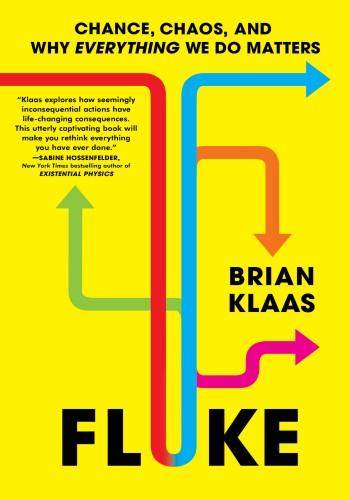
Fluke: Chance, Chaos, and Why Everything We Do Matters
by
Brian Klaas
Published 23 Jan 2024
Dove, Bitter Shade: The Ecological Challenge of Human Consciousness (New Haven, CT: Yale University Press, 2021). For a shorter summary of some of Dove’s insights, see Michael Schulson, “How to Choose,” Aeon, 14 July 2014. moneyballing of the game: Michael Lewis, Moneyball: The Art of Winning an Unfair Game (New York: W. W. Norton, 2004). moneyballing everything: Derek Thompson, “What Moneyball-for-Everything Has Done to American Culture,” Atlantic, 30 October 2022. 13 million data points: N. E. Humphries et al., “Environmental Context Explains Lévy and Brownian Movement Patterns of Marine Predators,” Nature 465 (7301) (2010): 1066–69.
…
Take, for example, how data analytics have been used to revolutionize baseball, the so-called moneyballing of the game (the name refers to the book Moneyball by Michael Lewis, later turned into a film starring Brad Pitt). It details how data analytics have transformed professional baseball, replacing intuitions and folk superstitions with hard-nosed, data-driven calculations. In closed, noncomplex systems (such as a heavily regulated sports competition), those calculations are extremely effective at predicting outcomes. In baseball, the only metric that matters is whether you win. Moneyballing helped teams win. The data nerds took over the corner offices.
…
Major League Baseball finally reversed course and changed the rules for the 2023 season to “de-moneyball” the game, aiming to generate more on-field action. The suits had solved the rubber problem. But fans wanted baseball to be more of a rice problem, swayed by a bit more randomness, the superstition of rally caps, not the cold data of Monte Carlo simulations. This saga was merely a matter of sporting preference, so the consequences of that miscalculation were hardly dire. But you get lulled into disaster—both as an individual and as a society—if you mistake rice problems for rubber ones, moneyballing everything, only to be wiped out by an uncertain event you could never have anticipated.
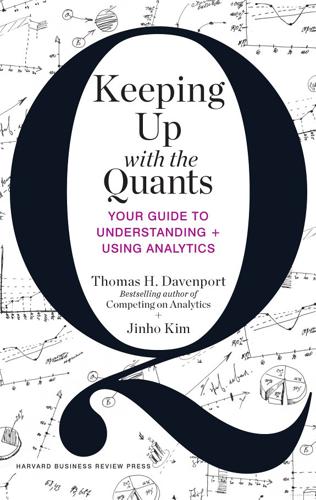
Keeping Up With the Quants: Your Guide to Understanding and Using Analytics
by
Thomas H. Davenport
and
Jinho Kim
Published 10 Jun 2013
Amazon review from “A ‘Umea University’ student (Sweden) give ratings,” August 24, 1999, http://www.amazon.com/review/R2LQ3TGC1PC51D/ref=cm_ cr_dp_title?ie=UTF8&ASIN=0673184447&channel=detail-glance&nodeID=283155 &store=books, retrieved December 30, 2012. 19. Michael Lewis, Moneyball: The Art of Winning an Unfair Game (New York: Norton, 2003). 20. “SN Names the 20 Smartest Athletes in Sports,” The Sporting News, Sept. 23, 2010, http://aol.sportingnews.com/mlb/feed/2010-09/smart-athletes/story/sporting-news-names-the-20-smartest-athletes-in-sports. 21. Michael Lewis, “The No-Stats All Star,” New York Times, February 13, 2009, www.nytimes.com/2009/02/15/magazine/15Battier-t.html. 22. Frances X. Frei and Mathew Perlberg, “Discovering Hidden Gems: The Story of Daryl Morey, Shane Battier, and the Houston Rockets (B),” Harvard Business School case study (Boston: Harvard Business Publishing, September 2010), 1.
…
Shane Battier is an NBA player—a forward—who currently plays for the Miami Heat. He played for the Houston Rockets from 2006 to 2011. He is relatively analytical as professional basketball players go, and was named the seventh-smartest player in professional sports by Sporting News magazine.20 Daryl Morey notes (in an article by Moneyball author Michael Lewis) that Battier was . . . given his special package of information. “He’s the only player we give it to,” Morey says. “We can give him this fire hose of data and let him sift. Most players are like golfers. You don’t want them swinging while they’re thinking.” The data essentially broke down the floor into many discrete zones and calculated the odds of Bryant making shots from different places on the court, under different degrees of defensive pressure, in different relationships to other players—how well he scored off screens, off pick-and-rolls, off catch-and-shoots and so on.
…
If we can’t turn that data into better decision making through quantitative analysis, we are both wasting data and probably creating suboptimal performance. Therefore, our goal in this book is to show you how quantitative analysis works—even if you do not have a quantitative background—and how you can use it to make better decisions. The Rise of Analytics and Big Data The rise of data is taking place in virtually every domain of society. If you’re into sports, you undoubtedly know about moneyball, the transformation of professional baseball—and by now virtually every major sport—by use of player performance data and analytics. If you’re into online gaming, you probably realize that every aspect of your game behavior is being collected and analyzed by such companies as Zynga and Electronic Arts.

Prediction Machines: The Simple Economics of Artificial Intelligence
by
Ajay Agrawal
,
Joshua Gans
and
Avi Goldfarb
Published 16 Apr 2018
See Daniel Kahneman, Thinking, Fast and Slow (New York: Farrar, Strauss and Giroux, 2011); and Dan Ariely, Predictably Irrational (New York: HarperCollins, 2009). 4. Michael Lewis, Moneyball (New York: Norton, 2003). 5. Of course, while Moneyball was based on the use of traditional statistics, it should be no surprise that teams are now looking to machine-learning methods to perform that function, gathering far more data in the process. See Takashi Sugimoto, “AI May Help Japan’s Baseball Champs Rewrite ‘Moneyball,’” Nikkei Asian Review, May 2, 2016, http://asia.nikkei.com/Business/Companies/AI-may-help-Japan-s-baseball-champs-rewrite-Moneyball. 6. Jon Kleinberg, Himabindu Lakkaraju, Jure Leskovec, Jens Ludwig, and Sendhil Mullainathan, “Human Decisions and Machine Predictions,” working paper 23180, National Bureau of Economic Research, 2017. 7.
…
Experienced radiologists contradicted themselves one in five times when evaluating X-rays. Auditors, pathologists, psychologists, and managers exhibited similar inconsistencies. Kahneman concludes that if there is a way of predicting using a formula instead of a human, the formula should be considered seriously. Poor expert prediction was the centerpiece of Michael Lewis’s Moneyball.4 The Oakland Athletics baseball team faced a problem when, after three of their best players left, the team did not have the financial resources to recruit replacements. The A’s general manager, Billy Beane (played by Brad Pitt in the film), used a statistical system developed by Bill James to predict player performance.
…
KEY POINTS * * * Humans, including professional experts, make poor predictions under certain conditions. Humans often overweight salient information and do not account for statistical properties. Many scientific studies document these shortcomings across a wide variety of professions. The phenomenon was illustrated in the feature film Moneyball. Machines and humans have distinct strengths and weaknesses in the context of prediction. As prediction machines improve, businesses must adjust their division of labor between humans and machines in response. Prediction machines are better than humans at factoring in complex interactions among different indicators, especially in settings with rich data.
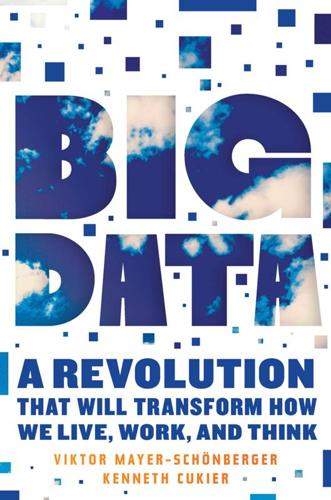
Big Data: A Revolution That Will Transform How We Live, Work, and Think
by
Viktor Mayer-Schonberger
and
Kenneth Cukier
Published 5 Mar 2013
After all, Walmart and Capital One pioneered the use of big data in retailing and banking and in so doing changed their industries. Now many of these tools have been democratized (although the data has not). The effect on individuals may be the biggest shock of all. Specific area expertise matters less in a world where probability and correlation are paramount. In the movie Moneyball, baseball scouts were upstaged by statisticians when gut instinct gave way to sophisticated analytics. Similarly, subject-matter specialists will not go away, but they will have to contend with what the big-data analysis says. This will force an adjustment to traditional ideas of management, decision-making, human resources, and education.
…
But after it became independent, UPS’s competitors felt more comfortable supplying their data, and ultimately everyone benefited from the improved accuracy that aggregation brings. Evidence that data itself, rather than skills or mindset, will come to be most valued can be found in numerous acquisitions in the big-data business. For example, in 2006 Microsoft rewarded Etzioni’s big-data mindset by buying Farecast for around $110 million. But two years later Google paid $700 million to acquire Farecast’s data supplier, ITA Software. The demise of the expert In the movie Moneyball, about how the Oakland A’s became a winning baseball team by applying analytics and new types of metrics to the game, there is a delightful scene in which grizzled old scouts are sitting around a table discussing players.
…
See imprecision MetaCrawler, [>] metadata: in datafication, [>]–[>] metric system, [>] Microsoft, [>], [>], [>] Amalga software, [>]–[>], [>] and data-valuation, [>] and language translation, [>] Word spell-checking system, [>]–[>] Minority Report [film], [>]–[>], [>] Moneyball [film], [>], [>]–[>], [>], [>] Moneyball (Lewis), [>] Moore’s Law, [>] Mydex, [>] nanotechnology: and qualitative changes, [>] Nash, Bruce, [>] nations: big data and competitive advantage among, [>]–[>] natural language processing, [>] navigation, marine: correlation analysis in, [>]–[>] Maury revolutionizes, [>]–[>], [>], [>], [>], [>], [>], [>], [>], [>], [>] Negroponte, Nicholas: Being Digital, [>] Netbot, [>] Netflix, [>] collaborative filtering at, [>] data-reuse by, [>] releases personal data, [>] Netherlands: comprehensive civil records in, [>]–[>] network analysis, [>] network theory, [>] big data in, [>]–[>] New York City: exploding manhole covers in, [>]–[>], [>]–[>], [>], [>] government data-reuse in, [>]–[>] New York Times, [>]–[>] Next Jump, [>] Neyman, Jerzy: on statistical sampling, [>] Ng, Andrew, [>] 1984 (Orwell), [>], [>] Norvig, Peter, [>] “The Unreasonable Effectiveness of Data,” [>] Nuance: fails to understand data-reuse, [>]–[>] numerical systems: history of, [>]–[>] Oakland Athletics, [>]–[>] Obama, Barack: on open data, [>] Och, Franz Josef, [>] Ohm, Paul: on privacy, [>] oil refining: big data in, [>] ombudsmen, [>] Omidyar, Pierre, [>] open data.

Predictive Analytics: The Power to Predict Who Will Click, Buy, Lie, or Die
by
Eric Siegel
Published 19 Feb 2013
Rio Salado Community College: Marc Parry, “Big Data on Campus,” New York Times, July 28, 2012. www.nytimes.com/2012/07/22/education/edlife/colleges-awakening-to-the-opportunities-of-data-mining.html. Jeopardy! winner: See Chapter 6 for more details. Roger Craig, “Data Science Meets the Quiz Show Jeopardy!,” Predictive Analytics World Chicago Conference, June 26, 2012, Chicago, IL. www.predictiveanalyticsworld.com/chicago/2012/agenda.php#day2–11. NPR Staff, “How One Man Played ‘Moneyball’ with ‘Jeopardy!,’” National Public Radio Online, November 20, 2011. www.npr.org/2011/11/20/142569472/how-one-man-played-moneyball-with-jeopardy.
…
Each of these Effects encompasses the fun part of science and technology: an intuitive hook that reveals how it works and why it succeeds. The Field of Dreams People . . . operate with beliefs and biases. To the extent you can eliminate both and replace them with data, you gain a clear advantage. —Michael Lewis, Moneyball: The Art of Winning an Unfair Game What field of study or branch of science are we talking about here? Learning how to predict from data is sometimes called machine learning—but, it turns out, this is mostly an academic term you find used within research labs, conference papers, and university courses (full disclosure: I taught the Machine Learning graduate course at Columbia University a couple of times in the late 1990s).
…
Predictive Analytics World Chicago Conference, June 26, 2012, Chicago, IL. www.predictiveanalyticsworld.com/chicago/2012/agenda.php#day2–11. Chris Jones, “If You Could Master All the Data in the World. . .,” Esquire, January 25, 2012. www.esquire.com/features/roger-craig-jeopardy-champ-0212. NPR Staff, “How One Man Played ‘Moneyball’ with Jeopardy!,” NPR, All Things Considered, November 20, 2011. www.npr.org/2011/11/20/142569472/how-one-man-played-moneyball-with-jeopardy. Ryan Tate, “How a Geek Cracked the Jeopardy! Code,” Gawker.com, November 16, 2011. http://gawker.com/5860275/how-a-geek-cracked-the-jeopardy-code. Ned Potter, “‘Jeopardy!’ Champ Wins Jackpot with Web App,” ABCNews, Technology Review, November 17, 2011. http://abcnews.go.com/blogs/technology/2011/11/jeopardy-champ-wins-jackpot-with-web-app/.
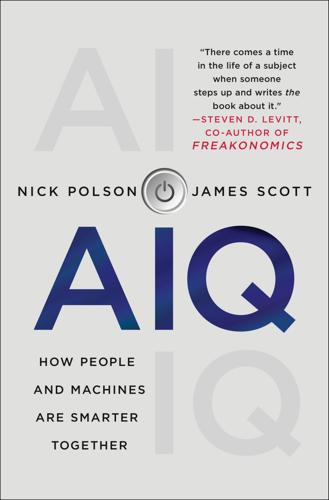
AIQ: How People and Machines Are Smarter Together
by
Nick Polson
and
James Scott
Published 14 May 2018
Its investment in AI has paid off handsomely: its fraud rate dropped to 0.32% of revenue in 2016, less than a quarter of the industry-wide average.23 Other payment-system companies, like Alipay in China or Stripe in the United States, have invested in similar technologies. And these systems keep improving, since they learn a little bit more about fraud with every new data point. King Solomon and Isaac Newton would both be proud. Moneyball for the Digital Age If you’re a sports fan, you’ve probably heard of “Moneyball,” author Michael Lewis’s term for a particular data-driven approach to building and coaching a sports team. In the late 1990s, the Oakland A’s figured out that traditional baseball scouts weren’t actually very effective at assessing what made a good player. A lot of what these scouts attributed to skill was really luck, and vice versa; they were systematically confusing signal with noise.
…
In 2016, for example, the Brooklyn Nets signed a sponsorship deal with a company called Infor, barely known to those outside enterprise-software circles. Infor builds software for big-data analytics—including for Ferrari, a Formula 1 team—and while it paid millions of dollars for the right to show its logo on the Nets’ jerseys, it also brought much more to the bargaining table than simply an open checkbook. Brett Yormark, the Nets’ CEO, explained that in selling the real estate on his team’s jersey, he wanted to identify a strategic partner “that was substantive enough to help us with performance both on and off the court.” The deal he signed with Infor is emblematic of the NBA’s new era of Moneyball, in which some of the league’s biggest stars will wear the logo of a big-data company on their jerseys.24 In the NBA, much of this revolution has been fueled by new data sources, like motion trackers on every player and cameras that cover every angle of the court.
…
As a result, they were able to compete—and win—against teams like the Red Sox and Yankees, who could afford to spend three times as much as Oakland on players. If you fast-forward 25 years, these innovations have changed every major sport in the world. Today, though, there’s one big difference. In the 1990s, Moneyball was something you could play with a spreadsheet and a smart intern. Now you need a cloud-based supercomputer and a dedicated team of data scientists—all because of the massive new data sets that professional sports teams began collecting once they realized the edge it would give them. Formula 1 The poster child for this revolution is Formula 1, the most popular auto-racing competition in the world.

On the Edge: The Art of Risking Everything
by
Nate Silver
Published 12 Aug 2024
As a testament to how far ahead of the curve he was, Brunson was still a regular—and a substantial winner—on the televised poker game High Stakes Poker well into his eighties despite never really having used the modern poker software tools called “solvers” that were about to upend the game. Like many other aspects of modern life, poker has gone through its own Moneyball-style revolution. The catalyst came in 2003—the year that Moneyball was published—when Chris Moneymaker, an amateur who had earned his seat online, won the $10,000 Main Event at the World Series of Poker. That triggered an explosion of interest in the game—and between Moneyball and Moneymaker, poker has never been the same. When Moneymaker won, the Main Event had 839 entrants, then considered a shockingly high number. But by 2023, the Main Event had 10,043 competitors, reaching the five figures for the first time.
…
Yes, it helped that my election forecasts in those years were usually right. But I also offered one last opportunity for a Moneyball sequel. A nerd[*4] uses data and statistics to disrupt a relatively unsympathetic target—lazy horse-race punditry. And the underdog wins, by predicting every state correctly in the 2012 election. After reading the first two and a half chapters of this book—meeting poker players and MIT Blackjack Team members whose way of life is edgy and anti-establishment—you might be tempted to think that’s the story of On the Edge too. Certainly, there is an undercurrent of Moneyball in this book—the Village’s risk-aversion still makes it vulnerable to being on the losing side of all sorts of economic and cultural bets.
…
GO TO NOTE REFERENCE IN TEXT “tax on bullshit”: Alex Tabarrok, “A Bet Is a Tax on Bullshit,” Marginal Revolution (blog), November 2, 2012, marginalrevolution.com/marginalrevolution/2012/11/a-bet-is-a-tax-on-bullshit.html. GO TO NOTE REFERENCE IN TEXT “Art Howes”: Alex Gleeman, “Art Howe Is Angry About How He Was Portrayed in ‘Moneyball,’ ” NBC Sports, September 27, 2011, nbcsports.com/mlb/news/art-howe-is-angry-about-how-he-was-portrayed-in-moneyball. GO TO NOTE REFERENCE IN TEXT Peabody does pick: David Hill, “Looking for an Edge, and Some Fun, Bettors Favor Super Bowl Props,” The New York Times, February 7, 2023, sec. Sports, nytimes.com/2023/02/07/sports/football/super-bowl-bets-props-odds.html.
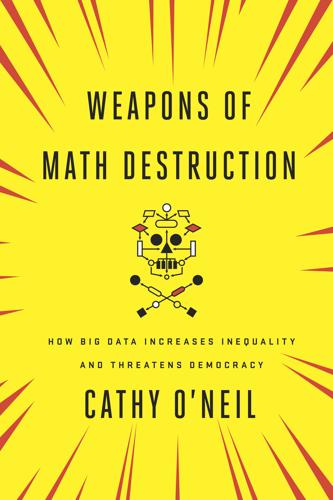
Weapons of Math Destruction: How Big Data Increases Inequality and Threatens Democracy
by
Cathy O'Neil
Published 5 Sep 2016
Baseball is an ideal home for predictive mathematical modeling. As Michael Lewis wrote in his 2003 bestseller, Moneyball, the sport has attracted data nerds throughout its history. In decades past, fans would pore over the stats on the back of baseball cards, analyzing Carl Yastrzemski’s home run patterns or comparing Roger Clemens’s and Dwight Gooden’s strikeout totals. But starting in the 1980s, serious statisticians started to investigate what these figures, along with an avalanche of new ones, really meant: how they translated into wins, and how executives could maximize success with a minimum of dollars. “Moneyball” is now shorthand for any statistical approach in domains long ruled by the gut.
…
CHAPTER 1 Boudreau, perhaps out of desperation: David Waldstein, “Who’s on Third? In Baseball’s Shifting Defenses, Maybe Nobody,” New York Times, May 12, 2014, www.nytimes.com/2014/05/13/sports/baseball/whos-on-third-in-baseballs-shifting-defenses-maybe-nobody.html?_r=0. Moneyball: Michael Lewis, Moneyball: The Art of Winning an Unfair Game (New York: W. W. Norton, 2003). In 1997, a convicted murderer: Manny Fernandez, “Texas Execution Stayed Based on Race Testimony,” New York Times, September 16, 2011, www.nytimes.com/2011/09/17/us/experts-testimony-on-race-led-to-stay-of-execution-in-texas.html?
…
American Express learned this the hard way: Ron Lieber, “American Express Kept a (Very) Watchful Eye on Charges,” New York Times, January 30, 2009, www.nytimes.com/2009/01/31/your-money/credit-and-debit-cards/31money.html. Douglas Merrill’s idea: Steve Lohr, “Big Data Underwriting for Payday Loans,” New York Times, January 19, 2015, http://bits.blogs.nytimes.com/2015/01/19/big-data-underwriting-for-payday-loans/. On the company web page: Website ZestFinance.com, accessed January 9, 2016, www.zestfinance.com/. A typical $500 loan: Lohr, “Big Data Underwriting.” ten thousand data points: Michael Carney, “Flush with $20M from Peter Thiel, ZestFinance Is Measuring Credit Risk Through Non-traditional Big Data,” Pando, July 31, 2013, https://pando.com/2013/07/31/flush-with-20m-from-peter-thiel-zestfinance-is-measuring-credit-risk-through-non-traditional-big-data/.
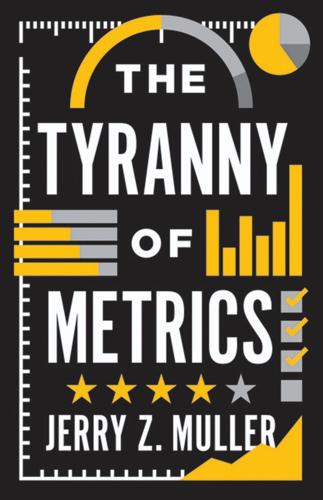
The Tyranny of Metrics
by
Jerry Z. Muller
Published 23 Jan 2018
in Caroline Mager, Peter Robinson, et al. (eds.), The New Learning Market (London, 2000). 5. Laura Landro, “The Secret to Fighting Infections: Dr. Peter Pronovost Says It Isn’t That Hard. If Only Hospitals Would Do It,” Wall Street Journal, March 28, 2011, and Atul Gawande, The Checklist Manifesto (New York, 2009). 6. Michael Lewis, Moneyball: The Art of Winning an Unfair Game (New York, 2003). 7. Chris Lorenz, “If You’re So Smart, Why Are You under Surveillance? Universities, Neoliberalism, and New Public Management,” Critical Inquiry (Spring 2012), pp. 599–29, esp. pp. 610–11. 8. Jonathan Haidt, The Righteous Mind (New York, 2012), p. 34 and passim. 9.
…
To be sure, there are many situations where decision-making based on standardized measurement is superior to judgment based upon personal experience and expertise. Decisions based on big data are useful when the experience of any single practitioner is likely to be too limited to develop an intuitive feel for or reliable measure of efficacy. When a physician confronts the symptoms of a rare disorder, for example, she is better advised to rely on standardized criteria based on the aggregation of many cases. Checklists—standardized procedures for how to proceed under routine conditions—have been shown to be valuable in fields as varied as airlines and medicine.5 And, as recounted in the book Moneyball, statistical analysis can sometimes discover that clearly measureable but neglected characteristics are more significant than is recognized by intuitive understanding based on accumulated experience.6 Used judiciously, then, measurement of the previously unmeasured can provide real benefits.
…
See metric fixation Forbes, 76 Ford Motor Company, 34 foreign aid and philanthropy, 153–56 Freedom of Information Act, 162 From Higher Aims to Hired Hands: The Social Transformation of American Business Schools and the Unfulfilled Promise of Management as a Profession, 12 gaming the metrics, 3, 24–25, 149–50 Geisinger Health System, 108–9, 110–11, 123 General Motors, 33 Geographical Information Systems (GIS), 126 Gibbons, Robert, 55–56 goals: displacement of, through diversion of effort, 169–70; value of short-term over long-term, 20 Goodhart’s Law, 19–20, 24 Google Ngram, 40, 159 Google Scholar, 79 Government Accountability Office, 156 Guardian, The, 163 Halbertal, Moshe, 160, 164 Hayek, Friedrich, 12, 59, 60–61 Healthgrades, 115 Henderson, Rebecca, 150 higher education, 9–14, 175–76; designed to make money, 86–87; encouraging everyone to pursue, 67–68; grading institutions in, 81–86; higher metrics through lower standards in, 69–73; measuring academic productivity, 78–80; pressure to measure performance in, 73–75; raising the number of winners lowering the value of winning with, 68–69; rankings, 75–78; value and limits of rankings in, 81 high-stakes testing, 93 Holmstrom, Bengt, 52, 169 Howard, Philip K., 41 human capital, 72, 98 impact factor measurement, 79 Improving America’s Schools Act, 90 information, distortion of, 23–24 innovation, 20; discouragement of, 140, 150–51, 171–72; employees moving to organizations that encourage, 173; unmeasurable risk for potential benefits of, 61–62 Institute of Medicine, 118–19 intimacy, 160 intrinsic rewards, 53–57, 119–20 Iraq War, 131–34 Johns Hopkins University, 109–10 Johnson, Lyndon, 98 Joint Commission, 115 Joint Stock Companies Act, 30 judgment, 6–7; distrust of, 39–42; measurement demanding, 176–77 “juking the stats,” 2 Kedourie, Elie, 62–63, 73 Kelvin, Lord, 17 Kennedy, Edward, 90 Keystone project, 109–10, 111–12, 176 Khurana, Rakesh, 12 Kilcullen, David, 131–34 Kiplinger, 76 Klarman, Seth, 47 Knight, Frank, 61–62, 151 knowledge: forms of, 59–60; practical, local, 62; pretense of, 60 Kohn, Alfie, 62 Kolberg, William, 90 Kozlowski, Dennis, 144 Lancelot, William, 33 leadership and organizational complexity, 44–47 Lehman Brothers, 146–47 Levy, Steven, 47 Limited Liability Act, 30 litigation, fear of, 42 London Business School, 138–39 Lowe, Robert, 29–30 Lumina Foundation, 67–68, 71 Luttwak, Edward, 35–37 luxury goods, 104 managerialism, 34–37 Manning, Bradley (later Chelsea),162–63 Mass Flourishing: How Grassroots Innovation Created Jobs, Challenge, and Change, 172 Masters of Management, 13 materialist bias, 36 Mayer-Schönberger, Viktor, 35 McNamara, Robert, 34–37, 131 measurement and improvement, 16–17, 101, 107, 111, 119, 123, 132, 176, 183 measuring inputs rather than outcomes, 23–24 “Measuring Progress in Afghanistan,” 132 measuring the most easily measurable, 23 measuring the simple when the desired outcome is complex, 23 Medicaid, 104 Medicare, 104, 114–16, 120–23 medicine: broader picture on metrics, pay-for-performance, rankings, and report cards in, 112–20; case selection bias in, 117–18; Cleveland Clinic, 107–8, 110–11; conclusions from success in, 110–12; cost disease and, 44; discouraging cooperation and common purpose in, 172; financial push to control costs in, 103–4, 119–20; Geisinger Health System, 108–9, 110–11, 123; Keystone project, 109–10, 111–12, 176; measured performance metrics in, 2–5, 107, 123, 176; ranking the American system of, 105–7; reducing readmissions test case, 120–23; rise of metric fixation with increased critique of, 42–43; tales of success in, 107–10 Mercurio, Jed, 2–3 Merton, Robert K., 12, 170 metric fixation, 4–9, 13; in business and finance, 137–51; cost disease and, 44; critique of the professions and apotheosis of choice in, 42–44; defined, 18; distortion of information with, 23–24; distrust of judgment leading to, 39–42; in higher education, 9–14, 67–87, 175–76; innovation and creativity stifled by, 20; key components of, 18; leadership and organizational complexity and, 44–47; lure of electronic spreadsheets in, 47; managerialism and, 34–37; in medicine, 2–5, 42–44, 103–23, 172, 176; by the military, 35–37, 131–35, 176; negative transformations of nature of work with, 19; pay for performance and, 19; in philanthropy and foreign aid, 153–56; in policing, 125–29, 175; predicting and avoiding negative consequences of, 169–73; recurrent flaws in, 23–25; relationship between measurement and improvement in, 17–19; in schools, 11, 24, 89, 175–76; Taylorism and, 31–34; theory of motivation and, 19–20; and transparency as enemy of performance, 159–65 metrics: checklist for when and how to use, 175–83; corruption or goal diversion in gathering and using, 182; costs of acquiring, 180; development of measures for, 181; diagnostic, 92–93, 103, 110, 123, 126, 176; diminishing utility of, 170; gaming the, 3, 23–24, 149–50; kind of information measured by, 177; media depictions of, 1–4; philosophical critiques of, 59–64; purposes of specific measurements and, 178–79; reasons leaders ask for, 180–81; recognition that not all problems are solvable by, 182–83; transactional costs of, 170; used to replace judgment, 6–7; usefulness of information from, 177–78 Michigan Keystone ICU Project, 109–10, 111–12, 176 Middle States Commission on Higher Education, 10–11 Milgrom, Paul, 52, 169 military, American, 35–37, 131–35, 176 Minsky, Hyman, 148 Mintzberg, Henry, 52 Mitchell, Ted, 82 Moneyball, 7 Morieux, Yves, 45, 170 mortgage backed securities, 146–47 motivation: extrinsic and intrinsic rewards and, 53–57, 119–20, 137–38, 144; theory of, 19–20 Muller, Jerry Z., 79 Mylan, 140–42, 143 National Alliance of Business, 90 National Assessment of Educational Progress (NAEP), 91, 97, 99 National Center for Educational Statistics, 97 National Center on Performance Incentives, 95–96 National Health Service, 104, 114, 116–17 National Security Agency, 163 Natsios, Andrew, 155–56 New Public Management, 51–53 Newsweek, 76 No Child Left Behind Act of 2001, 11, 24, 89, 100; problem addressed by, 89–91, 96; Race to the Top after, 94–95; unintended consequences of, 92–94.

The Metropolitan Revolution: How Cities and Metros Are Fixing Our Broken Politics and Fragile Economy
by
Bruce Katz
and
Jennifer Bradley
Published 10 Jun 2013
Mayor Antonio Villaraigosa saw Los Angeles as a metropolis at the vanguard of reinventing density and mobility. Visions clarify. Visions inspire. Visions catalyze. Visions matter. Successful visions are grounded in evidence, developed through the accumulation of relevant data and information, accompanied by smart analysis, experience, and intuition. This is, in part, Moneyball for metros. Moneyball—Michael Lewis’s popular book and a subsequent movie—documents the unique metrics developed by the Oakland Athletics’ general manager Billy Beane and his staff to assess offensive talent in baseball. By using distinctive measures to assemble the right players, the low-revenue Oakland A’s were able to successfully compete with free-spending teams like the New York Yankees and the Boston Red Sox.3 In other words, measure what matters.
…
Here in the city the goods of civilization are multiplied and manifolded; here is where human experience is transformed into viable signs, symbols, patterns of conduct, systems of order. Here is where the issues of civilization are focused.” Lewis Mumford, The Culture of Cities (New York: Harcourt Brace and Company, 1938), p. 3. 2. Jacobellis v. Ohio, 378 U.S. 184 (1964) (www.law.cornell.edu/supct/html/ historics/USSC_CR_0378_0184_ZS.html). 3. Michael Lewis, Moneyball: The Art of Winning an Unfair Game (New York: W. W. Norton, 2003). 4. Bruce worked with Secretary Cisneros for four years and remembers him frequently using this expression. 5. See Louise Story, “United States of Subsidies,” New York Times, December 1, 2012. 6. Angela Blanchard, “People Transforming Communities.
…
Paul (Minnesota) metropolitan area: economic development strategies in, 4; immigrant populations in, 48 Minorities. See Immigrant populations; Racial and ethnic differences MIT (Massachusetts Institute of Technology): as anchor institution, 121–23, 129, 130; and Cambridge Innovation Center, 127; and Massachusetts economy, 21–22 Mixed-use development, 89, 114–15, 122, 142, 146, 155, 159 Moneyball (Lewis), 196 Moretti, Enrico, 33, 36, 102 Mosey, Sue, 134, 135, 196 Mota, Denerson, 163 Moynihan, Daniel Patrick, 173 Muro, Mark, 178, 179 Neighborhood Centers, Inc. (NCI): appreciative inquiry approach of, 96–97, 98, 99, 100–01, 106–07; and educational programs, 104–05; funding for, 101, 106, 108, 200; game changers for, 198; Gulfton (Texas), programs developed in, 89–91, 96, 97–98, 104–05; history of, 94; lessons learned from, 105–08; networks created by, 106–08, 195; organizational scale of, 100–01, 107–08; Pasadena (Texas), programs developed in, 91–92, 98, 99–100; services offered by, 89, 94–96, 107; sustainability of, 201 Nelson, Chris, 120–21 Network literacy, 87 Networks: building, 194–96; defined, 67; management of, 84–87.
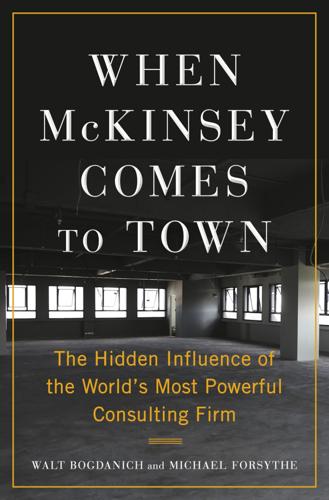
When McKinsey Comes to Town: The Hidden Influence of the World's Most Powerful Consulting Firm
by
Walt Bogdanich
and
Michael Forsythe
Published 3 Oct 2022
GO TO NOTE REFERENCE IN TEXT “on a web of fraudulent partnerships”: Associated Press, “Enron’s Founder Oversaw Company’s Rise and Collapse.” GO TO NOTE REFERENCE IN TEXT “McKinsey didn’t just cash the checks”: McDonald, Firm, 242. GO TO NOTE REFERENCE IN TEXT a book called Moneyball: Michael Lewis, Moneyball: The Art of Winning an Unfair Game (New York: Norton, 2003). GO TO NOTE REFERENCE IN TEXT sports and gambling: For years the major sports leagues fought New Jersey’s efforts to allow sports betting, claiming they would suffer “irreparable harm” if sports books opened in Atlantic City.
…
As a junior member of the Allstate team, Luhnow is unlikely to have played a role in devising that scheme, but it does make one wonder what lessons, if any, he might have taken from the experience. Then Moneyball came along, and it piqued his curiosity and prompted the St. Louis Cardinals to rethink their baseball operation. With the help of a former McKinsey colleague—the son-in-law of the Cardinals’ owner—Luhnow got a job as the team’s vice president for scouting and player development, a surprisingly important position for a newcomer with no formal background in baseball. Luhnow quickly signaled his commitment to analytics by hiring Sig Mejdal, a former blackjack dealer who had also worked as an engineer for Lockheed Martin and NASA. He changed careers after reading Moneyball. Mejdal’s description of modern baseball did not evoke memories of Casey Stengel or Yogi Berra.
…
Veteran business reporters who have autopsied Enron’s carcass were not sold on the victim part. “McKinsey didn’t just cash the checks,” Duff McDonald wrote in his history of the firm. “It fully believed in the cult and helped spread the gospel.” * * * — Soon after Enron imploded, a book called Moneyball became a bestseller, ushering in what one prominent sportswriter called the biggest change to professional baseball since integration half a century earlier. It told the story, later made into a movie with Brad Pitt, of how the frugal Oakland Athletics nearly won the pennant in 2002 by making game decisions based on data analysis—analytics for short—rather than on unscientific beliefs passed down through generations of baseball players.

Reinventing Capitalism in the Age of Big Data
by
Viktor Mayer-Schönberger
and
Thomas Ramge
Published 27 Feb 2018
“look to build a monopoly”: Peter Thiel, “Competition Is for Losers,” Wall Street Journal, September 12, 2014, https://www.wsj.com/articles/peter-thiel-competition-is-for-losers-1410535536. choose the job they like: See also Van Parijs and Vanderborght, Basic Income, 165–169. CHAPTER 10: HUMAN CHOICE become “a CEO of a retail company”: Ryan Mac, “Stitch Fix: The $250 Million Startup Playing Fashionista Moneyball,” Forbes, June 1, 2016, www.forbes.com/sites/ryanmac/2016/06/01/fashionista-moneyball-stitch-fix-katrina-lake/#54e798e859a2. “constantly maxing out Lake’s $6,000-limit credit card”: Ibid. a potential start-up “unicorn”: “Fifty Companies That May Be the Next Start-Up Unicorns,” New York Times, August 23, 2015, https://bits.blogs.nytimes.com/2015/08/23/here-are-the-companies-that-may-be-the-next-50-start-up-unicorns/?
…
VIKTOR MAYER-SCHÖNBERGER (left) is a professor at the University of Oxford and the coauthor, with Kenneth Cukier, of the best-selling Big Data. THOMAS RAMGE is the technology correspondent of the business magazine brand eins and writes for the Economist. ALSO BY VIKTOR MAYER-SCHÖNBERGER Big Data: A Revolution That Will Transform How We Live, Work, and Think (with Kenneth Cukier) Learning with Big Data (with Kenneth Cukier) Delete: The Virtue of Forgetting in the Digital Age Governance and Information Technology: From Electronic Government to Information Government (with David Lazer) Praise for REINVENTING CAPITALISM IN THE AGE OF BIG DATA “Digitalization is challenging us to re-think the future of our economy.
…
Business Insider, December 16, 2015, http://uk.businessinsider.com/simple-questions-like-do-you-like-horror-films-can-predict-whether-a-startup-will-implode-2015-12. representative of Big Data: Viktor Mayer-Schönberger and Kenneth N. Cukier, Big Data: A Revolution That Will Transform How We Live, Work, and Think (New York: Houghton Mifflin Harcourt, 2013). going beyond its initial training: For those who want to learn more about machine-learning methods (rather than Big Data more generally) in an easily accessible way, see Ethem Alpaydin, Machine Learning (Cambridge: MIT Press, 2016). Tesla’s semiautonomous driving system: Dana Hull, “The Tesla Advantage: 1.3 Billion Miles of Data,” Bloomberg Technology, December 20, 2016, https://www.bloomberg.com/news/articles/2016-12-20/the-tesla-advantage-1-3-billion-miles-of-data.
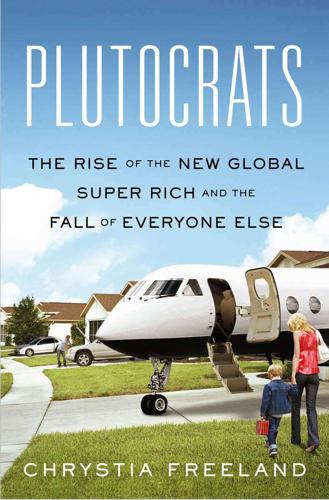
Plutocrats: The Rise of the New Global Super-Rich and the Fall of Everyone Else
by
Chrystia Freeland
Published 11 Oct 2012
Reality television and competition shows are another way to avoid paying the celebrity premium, by making the hoi polloi the stars and, as Pop Idol does, binding them to contracts that prevent them from demanding any of the upside if their shows make them famous. Some sports team owners are on a similar quest to pay for talent, not stardom. That is the story of the Oakland A’s and their general manager, Billy Beane, as lionized in Michael Lewis’s Moneyball. Beane is Lewis’s underfunded, underdog hero, but his is really the story of capital—the baseball team owners—looking for a way to avoid paying the celebrity premium to its stars—the players—in this case by looking for athletes whose skills were crucial to the team’s success but were undervalued by the market.
…
McKinsey believes that the transformative power of all this data will amount to a fifth wave in the technology revolution, building on the first four: the mainframe era; the PC era; the Internet and Web 1.0 era; and, most recently, the mobile and Web 2.0 era. Big data will create a new tribe of highly paid superstars. McKinsey estimates that by 2018 in the United States alone there will be shortfall of between 140,000 and 190,000 people with the “deep analytical talent” required to use big data. And it will probably create a handful of billionaires who understand and capitalize on the revolutionary potential of big data before the rest of us do—indeed, one way to understand Facebook’s $100 billion market capitalization is as a bet on big data. — The technology revolution isn’t just about the nerds of the West Coast.
…
He called his future partner and insisted, “We need to start a company now!” — If you have a PhD in math or statistics, the revolution you are probably trying to capitalize on today is big data—a term for the vast amounts of digital data we now create and have an increasing ability to store and manipulate. If wonks were fashionistas, big data would be this season’s hot new color. When I interviewed him before a university audience in late 2011, Larry Summers named big data as one of the three big ideas he is most excited about (the others were biology and the rise of the emerging markets). The McKinsey Global Institute, the management consultancy’s research arm and the closest the corporate world comes to having an ivory tower, published a 143-page report in 2011 on big data, touting it as “the next frontier for innovation, competition, and productivity.”

Strength in Numbers: How Polls Work and Why We Need Them
by
G. Elliott Morris
Published 11 Jul 2022
Philip Tetlock, Expert Political Judgment: How Good Is It? How Can We Know? (Princeton, NJ: Princeton University Press, 2005), 134. CHAPTER 6: BIG DATA AND BLACK BOXES 1. Sasha Issenberg, “How Obama’s Team Used Big Data to Rally Voters,” MIT Technology Review, December 19, 2012, https://www.technologyreview.com/2012/12/19/114510/how-obamas-team-used-big-data-to-rally-voters/. 2. Erin Hartman, interview with the author, March 9, 2021. 3. Hartman, interview, March 9, 2021. 4. Issenberg, “How Obama’s Team Used Big Data to Rally Voters.” 5. Author’s estimates. 6. Author’s analysis of likely voter modeling in publicly released polls. 7.
…
Silver’s models, taking in his “secret sauce” formulation of pollster ratings and debiasing, might be appropriate for a subject such as baseball, where data are unbiased and the signal can be found within the noise (to borrow from the title of his 2012 book). But because the science on which polls are built is constantly evolving, reconsidering assumptions and correcting past errors, election forecasting will never approach the accuracy of, say, “moneyball”—with its precise measurements of a baseball player’s skills and rich datasets of factors that impact performance. The specific proposals that I have put to work in The Economist’s forecasting models include allowing more room for assessing bias from partisan nonresponse, lower-quality weighting schemes, and data collection, and relying more on non-polling factors to correct our judgments when samples are skewed.
…
D., 64–65 Kennedy, John F., 56, 58, 66–67, 69, 70–74, 77 Kernell, Samuel, 27 Key, V.O., 26–27 khipu, 7 Knowledge Networks, 134–36 Koczela, Steve, 89, 91, 94, 189 Kos Media, 142 Kurds, 84–85 Kuriakose, Noble, 93–84 Kuwait, 81 Lancet, 82, 83, 86, 87 Landon, Alf, 34–35, 41, 186 Langer, Gary, 92 Law of Large Numbers, 104, 122, 187 Lazarsfeld, Paul, 68–69 Lepore, Jill, 57 Leviathan (Hobbes), 16 Levitin, Daniel, 101 Lewinsky, Monica, 27 Lies, Damn Lies, and Statistics (Wheeler), 72 Life magazine, 43 Lincoln, Abraham, 168 Lippmann, Walter, 20–22, 26, 28, 29, 43, 57 Literary Digest, 34–37, 40–41, 43, 60, 63–65, 154 Locke, John, 17, 18 Lohr, Steve, 150–51 Long, Huey, 64 Los Angeles Times, 34, 146 Lost in a Gallup (Campbell), 149 Loth, David, 46–47 Lucid (survey platform), 175 Madison, James, 2–3, 19, 22, 165 Maine, 63, 155 manipulation, 25, 78, 85, 98 margin of error, xii–xiii, 44, 160, 173, 176, 193 Marist College, 113 Markey, Ed, 185 Marquette University, 105, 152 marriage equality, xv, 24 Massachusetts, 4, 34, 41, 175 Massachusetts Institute of Technology (MIT), 56, 67 matched samples, 138 McCain, Cindy, 95–96 McCain, John, 95–96, 110–12, 123–25 McCaskill, Nolan, 150 McElwee, Sean, 175 McGovern, George, 77 McPhee, Bill, 68, 70–71 Medicare, 24, 73 Meet the Press, 106 metics, 9 Michigan, 59–60, 64, 70, 105, 129, 150, 154, 157 Michigan State University, 154 Microsoft, xii midterm elections of 1934, 62, 63 of 1938, 65 of 2018, 142 Miller, Warren, 105 “Minute Men of the Democratic Party,” 61 Missouri, 70 MIT (Massachusetts Institute of Technology), 56, 57 Mitofsky, Warren, 44, 121, 131–32 “moneyball,” 120 Monroe, James, 31 Monte Carlo simulations, 111, 118 Moses, 8–9 Mostellar, Frederick, 45 MSNBC, 113 multilevel regression with post-stratification (MRP), 139, 141–45, 147, 175 Murúa, Martín de, 7 musters, 31–33 National Gazette, 3 National Industrial Recovery Act, 66 National Journal, 106, 108 National Opinion Research Center, 41, 139 Native Americans, 20 NBC, 106, 113 Neijens, Peter, 53 neonatal mortality rate, 189 NetRatings, 133–34 New Deal, 24, 62–63 New Hampshire, 96, 153 New Jersey, 40, 70 New Mexico, xvi New Statesman, 149 New York Herald, 33, 34, 74 New York Herald Tribune, 36, 42 New York State, 70 New York Times, 36, 40, 43, 73, 97, 116, 129, 145, 146, 149–51, 153–57, 160, 172, 175 Nickerson, David, xvi Nie, Norman, 134 Nielsen Company, 133–34 Nixon, Richard, 71–78, 170 Nolle, David, 91–92 North American Review, The, 5 North Carolina, 97, 129, 150, 157 Obama, Barack, 110–12, 115, 123–28, 139–41 Obergefell v.

The Equality Machine: Harnessing Digital Technology for a Brighter, More Inclusive Future
by
Orly Lobel
Published 17 Oct 2022
We need a more comprehensive portrayal of what is currently under way and what the future can hold. We need to reject the black-and-white story of diametrically opposed futures—a robopocalypse at one end of the spectrum and a robotopia at the other—and have a richer conversation about the transformations occurring in every sphere of our lives. The Equality Moneyball In Moneyball: The Art of Winning an Unfair Game, Michael Lewis recounts the story of Billy Beane, the Oakland Athletics general manager who built a winning baseball team on the cheap. Beane used statistical analysis while others were still using human judgment and perceptions, hunches and gut instincts. Remember our guiding principles: we cannot correct what we don’t measure.
…
As computing power increases, computers can access ever-larger data sets and apply sophisticated algorithms to predictive modeling, dramatically increasing accuracy. An algorithm is simply a set of instructions; basically, it’s a formula that takes you step by step through a decision-making process. Today’s algorithms can gobble up and find patterns in huge amounts of information, and this capacity is rapidly increasing. Imagine an equality moneyball. eBay offers a potent illustration of disparity detection through digital data analysis—and how we can learn from what we find. The company is a pioneer in its willingness to open its under-the-surface data for researchers to mine. Usually this kind of data is kept secret, a practice that needs to change.
…
These fundamental questions about the costs and benefits of controlling knowledge and the distributional effects of intellectual property and antitrust regimes must now be worked out with regard to big data and AI capabilities. Just like information, knowledge, innovation, and our talent pools more generally, AI and data should be understood as a commons—a shared resource capable of addressing some of the world’s toughest problems: global health and pandemics, world hunger, environmental sustainability and climate change, and poverty and inequality. We should move toward more open-source big data as well as public initiatives to crowdsource data collection for public goals. And we need to incentivize more competition and less concentration in the development and use of new technologies.
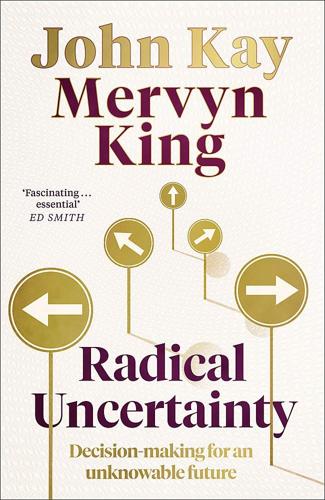
Radical Uncertainty: Decision-Making for an Unknowable Future
by
Mervyn King
and
John Kay
Published 5 Mar 2020
But in the hundred years since, advances in sports medicine, nutrition and engineering – the work done by Dr Carré and his colleagues and the activities of professional coaches – mean that the 100m which took Abrahams 10.6 seconds to run that day can now be covered by Usain Bolt in 9.58 seconds. And top professional coaches are now well-remunerated popular celebrities. Billy Beane, who brought statistics into baseball, not only achieved fame but the honour of being played by Brad Pitt in another movie celebratory of sporting success, Moneyball . The sporting analogy is not simply a metaphor. Just as Beckham benefited from the contributions of sports experts and coaches, Obama was dependent on the assessments of intelligence agencies and the wisdom of his staff. Actors, mentors and analysts make their distinct contributions to good decision-making.
…
Kung Bushmen, 216 , 217 , 325 Lampert, Eddie, 287–9 , 292 Lampson, Butler, 28 Landon, Alf, 240 , 390 Laplace, Pierre-Simon, 70 , 199 Lascaux cave paintings, 216 law: civil law and common law jurisdictions, 205–6 , 213–14 ; ‘eat what you kill’ policies, 409 ; legal reasoning, 194–5 , 196–8 , 205–7 , 210–14 , 410 , 415 , 416 ; presumption of innocence, 210 ; and probabilistic reasoning, 196 , 197 , 198–203 , 206–7 , 210–12 , 214 ; ‘the prosecutor’s fallacy’, 201–2 , 203 ; ‘reasonable doubt’ concept, 198 , 201 , 205–6 , 211–12 ; and ‘rodeo problem’, 206–7 ; search for ‘best explanation’, 211–14 ; and statistical discrimination, 207–8 Lawson, Nigel, 291 Leamer, Edward, 100 Leamon, Nathan, The Test , 268 Lee, General Robert E., 188 Leeson, Nick, 411 Lehman Brothers, failure of (2008), 5 , 36 , 158–9 , 267 , 410–11 , 412 Leonardo da Vinci, 219 , 421 , 428 LeRoy, Stephen, 74 , 78 Let’s Make a Deal (US quiz show), 62–3 , 65 , 69 Lewis, Michael, 135 , 215 ; The Undoing Project , 121 , 393–4 Libet, Benjamin, 171 LIBOR scandal, 192 Libratus (poker-playing computer), 263 life expectancy, 43 , 56 , 57 , 161 , 232–3 Lincoln, Abraham, 266 , 269 , 290 Literary Digest , 240 , 390 Livy (Roman historian), 54 , 186 , 187 Lloyds Bank, 325 Lloyd’s of London, 55–6 , 322–4 , 325 , 326 Loch Ness monster, 325 , 326 Loewenstein, George, 128–9 , 135 , 310 London School of Economics, 339 , 382–3 Long Term Capital Management, 153 , 309 Louis XIV, King of France, 411 Lucas, Robert, 36 , 92 , 93 , 338–9 , 341 , 345 , 346 , 348 , 354 Maa-speaking people of East Africa, 160–1 , 189 MacArthur, Douglas, 292–3 , 420 Macartney, Lord, 419 Mackay, Charles, Extraordinary Popular Delusions and the Madness of Crowds , 315 Malthus, Thomas, 253 , 358–61 , 362–3 Mandelbrot, Benoit, 238 Manhattan grid plan, 424–5 Manville, Brook, 374 Mao Tse-tung, 4–5 , 292 Markowitz, Harry, 307 , 308 , 309–10 , 318 , 320 , 332 , 333 , 366 Márquez, Gabriel García, 226 Marshall, Alfred, 276 , 381 , 382 Marshall, Barry, 284 , 306 Marshall, George, 292 Marxism, 220 Mary Celeste mystery (1872), 33–4 , 44 Mary Poppins (film, 1964), 306 mathematical reasoning, xiv , 12 , 19 , 42–3 , 47 , 53–4 , 93 , 343 , 401 , 404–5 ; appropriate use of, 383 ; fixed point theorems, 254 ; fractal geometry, 238–9 ; ‘grand auction’ of Arrow and Debreu, 343–5 ; and historical narratives, 188 ; small world applications of, 175–6 Matsushita, Konosuke, 410 Mauss, Marcel, The Gift (1925), 190–1 Max Planck Institute, Berlin, 152 maximising behaviour, xiv , 258 , 381–2 ; ‘ambiguity aversion’ concept, 135 ; and evolutionary rationality, 157 , 158 , 166–7 ; and greed, 127–8 , 409 ; limits to, xiv–xv , 41–4 , 152 , 171–2 , 310 , 345 , 382 , 400–1 , 435–44 ; maximising expected utility, 108 , 111–14 , 115–18 , 129–30 , 400 ; and utilitarian theory, 110–11 Maxwell, Robert, 312 , 313 May, Robert, 375 Maynard, John, 156 McHugh, Dodd, 425 McLaren racing team, 391 McNamara, Robert, 281–2 , 298–300 McRaven, Admiral William, 298 Meadow, Professor Sir Roy, 197–8 , 200 , 201 medicine, 22 , 32 , 39–40 , 88–9 , 383 , 384 , 387 ; computer technologies, 185–6 ; doctors’ decision-making, 184–6 , 194 , 398–9 ; HIV infections, 375–6 ; infectious diseases, 282–3 , 285 ; puerperal fever, 282–3 , 306 ; ‘randomised controlled trials’ (RCTs), 243–5 ; screening for cancer, 66–7 , 206 ; stomach ulcers, 284 , 306 ; twentieth century improvements, 57 ; and uncertainty, 44–5 mercantilism, 249 Mercier, Hugo, 162 , 272 , 415 Méré, Chevalier de, 53 , 59 , 60 , 61 Merton, Robert C., 309 Merton, Robert K., 35–6 , 309 MESSENGER (NASA probe), 18–19 , 26 , 35 , 218 , 394 meteorology, 23 , 43 , 101–2 , 406 Michelangelo, 421 , 428 Michelson, Albert, 430 Microsoft, 29 , 30–1 migration, 369–70 , 372 ; European to USA, 427 military campaigns and strategy, 3–4 , 24–6 , 292–3 , 294–5 , 298–300 , 412–13 , 433 military-industrial complex, 294 Mill, John Stuart, 110 , 429–30 ; System of Logic (1843), 70 Miller, Arthur, Death of a Salesman , 220 Ming emperors, 419 Mintzberg, Henry, 296 , 410 Mirowski, Philip, 388 MMR triple vaccine, 394 mobile phones, 30–1 , 38–9 , 257 , 344 models: appropriate use of, 376–7 ; of Canadian fisheries, 368–9 , 370 , 371–2 , 423 ; consulting firms, 180 , 182–3 , 275–6 , 365 , 370–1 , 405 ; EU migration models, 370 , 372 ; invented numbers in, 320 , 363–4 , 365 , 371 , 373 , 404 , 405 , 423 ; maps as not the territory, 391–4 ; microeconomic research, 382 , 392 ; misuse/abuse of, 312–13 , 320 , 368–76 , 405 ; at NASA, 373–4 , 391–2 ; policy-based evidence, 370–1 , 373–4 , 405 , 412–13 ; and public consultation, 372 ; reproduction of large/real-world, 390–2 ; role of incentives/targets, 409 ; stationarity as assumed, 333 , 339 , 340–1 , 349 , 350 , 366–7 , 371–2 ; as tools, 384–6 ; transport modelling, 363–5 , 370 , 371 , 372 , 396 , 404 , 407 ; WebTAG, 363–4 , 365 , 371 , 404 , 407 ; WHO HIV model, 375–6 ; see also economic models; small world models Moivre, Abraham de, 57–8 , 233 money supply, 96 Moneyball (film, 2011), 273 MONIAC (Monetary National Income Analogue Computer) machine, 339 ‘Monte Carlo simulations’, 365 Montgomery, Bernard Law, 293 Moore, Dudley, 97 Morgenstern, Oskar, 111 , 133 , 435–7 Moses, Robert, 425 Mourinho, José, 265 Mrs White’s Chocolate House (St James’s), 55 Murray, Bill, 419 Musk, Elon, 128 , 130 , 307 Mussabini, Sam, 273 mutualisation: in insurance markets, 325–6 ; and !
…
Risk is necessarily particular. It does not mean the same thing to J. P. Morgan as it does to a paraglider or mountain climber, or to a household saving for retirement or the children’s education. In 1979, Daniel Kahneman and Amos Tversky, the two Israeli psychologists working in America who were popularised in Michael Lewis’s bestseller The Undoing Project , offered ‘prospect theory’ as an alternative account of behaviour under uncertainty to the conventional ‘rational’ view based on the Friedman– Savage axioms. Uncertainty was ‘coded’ relative to some reference point around which gains were valued less than losses of similar amount were resented.
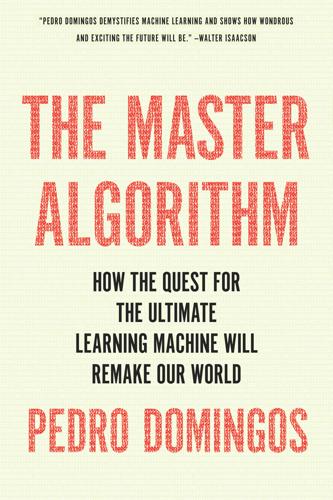
The Master Algorithm: How the Quest for the Ultimate Learning Machine Will Remake Our World
by
Pedro Domingos
Published 21 Sep 2015
In fact, it’s the other way around: human intuition can’t replace data. Intuition is what you use when you don’t know the facts, and since you often don’t, intuition is precious. But when the evidence is before you, why would you deny it? Statistical analysis beats talent scouts in baseball (as Michael Lewis memorably documented in Moneyball), it beats connoisseurs at wine tasting, and every day we see new examples of what it can do. Because of the influx of data, the boundary between evidence and intuition is shifting rapidly, and as with any revolution, entrenched ways have to be overcome. If I’m the expert on X at company Y, I don’t like to be overridden by some guy with data.
…
Prologue An early list of examples of machine learning’s impact on daily life can be found in “Behind-the-scenes data mining,” by George John (SIGKDD Explorations, 1999), which was also the inspiration for the “day-in-the-life” paragraphs of the prologue. Eric Siegel’s book Predictive Analytics (Wiley, 2013) surveys a large number of machine-learning applications. The term big data was popularized by the McKinsey Global Institute’s 2011 report Big Data: The Next Frontier for Innovation, Competition, and Productivity. Many of the issues raised by big data are discussed in Big Data: A Revolution That Will Change How We Live, Work, and Think, by Viktor Mayer-Schönberger and Kenneth Cukier (Houghton Mifflin Harcourt, 2013). The textbook I learned AI from is Artificial Intelligence,* by Elaine Rich (McGraw-Hill, 1983).
…
L., 230 Mendeleev, Dmitri, 235 Meta-learning, 237–239, 255, 309 Methane/methanol, 197–198 Michalski, Ryszard, 69, 70, 90 Michelangelo, 2 Microprocessor, 48–49, 236 Microsoft, 9, 22 Kinect, 88, 237, 238 Windows, 12, 133, 224 Xbox Live, 160–161 Microsoft Research, 152 Military robots, 21, 279–282, 299, 310 Mill, John Stuart, 93 Miller, George, 224 Minsky, Marvin, 35, 38, 100–101, 102, 110, 112, 113 Mitchell, Tom, 64, 69, 90 Mixability, 135 MLNs. See Markov logic networks (MLNs) Moby Dick (Melville), 72 Molecular biology, data and, 14 Moneyball (Lewis), 39 Mooney, Ray, 76 Moore’s law, 287 Moravec, Hans, 288 Muggleton, Steve, 80 Multilayer perceptron, 108–111 autoencoder, 116–118 Bayesian, 170 driving a car and, 113 Master Algorithm and, 244 NETtalk system, 112 reinforcement learning and, 222 support vector machines and, 195 Music composition, case-based reasoning and, 199 Music Genome Project, 171 Mutation, 124, 134–135, 241, 252 Naïve Bayes classifier, 151–153, 171, 304 Bayesian networks and, 158–159 clustering and, 209 Master Algorithm and, 245 medical diagnosis and, 23 relational learning and, 228–229 spam filters and, 23–24 text classification and, 195–196 Narrative Science, 276 National Security Agency (NSA), 19–20, 232 Natural selection, 28–29, 30, 52 as algorithm, 123–128 Nature Bayesians and, 141 evolutionaries and, 137–142 symbolists and, 141 Nature (journal), 26 Nature vs. nurture debate, machine learning and, 29, 137–139 Neal, Radford, 170 Nearest-neighbor algorithms, 24, 178–186, 202, 306–307 dimensionality and, 186–190 Negative examples, 67 Netflix, 12–13, 183–184, 237, 266 Netflix Prize, 238, 292 Netscape, 9 NETtalk system, 112 Network effect, 12, 299 Neumann, John von, 72, 123 Neural learning, fitness and, 138–139 Neural networks, 99, 100, 112–114, 122, 204 convolutional, 117–118, 302–303 Master Algorithm and, 240, 244, 245 reinforcement learning and, 222 spin glasses and, 102–103 Neural network structure, Baldwin effect and, 139 Neurons action potentials and, 95–96, 104–105 Hebb’s rule and, 93–94 McCulloch-Pitts model of, 96–97 processing in brain and, 94–95 See also Perceptron Neuroscience, Master Algorithm and, 26–28 Newell, Allen, 224–226, 302 Newhouse, Neil, 17 Newman, Mark, 160 Newton, Isaac, 293 attribute selection, 189 laws of, 4, 14, 15, 46, 235 rules of induction, 65–66, 81, 82 Newtonian determinism, Laplace and, 145 Newton phase of science, 39–400 New York Times (newspaper), 115, 117 Ng, Andrew, 117, 297 Nietzche, Friedrich, 178 NIPS.

Homo Deus: A Brief History of Tomorrow
by
Yuval Noah Harari
Published 1 Mar 2015
Rebecca Morelle, ‘Google Machine Learns to Master Video Games’, BBC, 25 February 2015, accessed 12 August 2015, http://www.bbc.com/news/science-environment-31623427; Elizabeth Lopatto, ‘Google’s AI Can Learn to Play Video Games’, The Verge, 25 February 2015, accessed 12 August 2015, http://www.theverge.com/2015/2/25/8108399/google-ai-deepmind-video-games; Volodymyr Mnih et al., ‘Human-Level Control through Deep Reinforcement Learning’, Nature, 26 February 2015, accessed 12 August 2015, http://www.nature.com/nature/journal/v518/n7540/full/nature14236.html. 14. Michael Lewis, Moneyball: The Art of Winning an Unfair Game (New York: W. W. Norton, 2003). Also see the 2011 film Moneyball, directed by Bennett Miller and starring Brad Pitt as Billy Beane. 15. Frank Levy and Richard Murnane, The New Division of Labor: How Computers are Creating the Next Job Market (Princeton: Princeton University Press, 2004); Dormehl, The Formula, 225–6. 16.
…
When people realise how fast we are rushing towards the great unknown, and that they cannot count even on death to shield them from it, their reaction is to hope that somebody will hit the brakes and slow us down. But we cannot hit the brakes, for several reasons. Firstly, nobody knows where the brakes are. While some experts are familiar with developments in one field, such as artificial intelligence, nanotechnology, big data or genetics, no one is an expert on everything. No one is therefore capable of connecting all the dots and seeing the full picture. Different fields influence one another in such intricate ways that even the best minds cannot fathom how breakthroughs in artificial intelligence might impact nanotechnology, or vice versa.
…
However, Dataists believe that humans can no longer cope with the immense flows of data, hence they cannot distil data into information, let alone into knowledge or wisdom. The work of processing data should therefore be entrusted to electronic algorithms, whose capacity far exceeds that of the human brain. In practice, this means that Dataists are sceptical about human knowledge and wisdom, and prefer to put their trust in Big Data and computer algorithms. Dataism is most firmly entrenched in its two mother disciplines: computer science and biology. Of the two, biology is the more important. It was the biological embracement of Dataism that turned a limited breakthrough in computer science into a world-shattering cataclysm that may completely transform the very nature of life.

Likewar: The Weaponization of Social Media
by
Peter Warren Singer
and
Emerson T. Brooking
Published 15 Mar 2018
At its most promising, the OSINT revolution doesn’t just help people parse secrets from publicly accessible information; it may also help them predict the future. Predata is a small company founded by James Shinn, a former CIA agent. Shinn modeled his unique service on sabermetrics, the statistics-driven baseball analysis method popularized by Michael Lewis’s book Moneyball. “By carefully gathering lots and lots of statistics on their past performance from all corners of the internet, we are predicting how a large number of players on a team will bat or pitch in the future,” Shinn explains. In this case, however, the statistics his firm mines are tens of millions of social media feeds around the world.
…
See flight MH17 microblogging, 97 MicroChip, 143–44 Microsoft, 227, 237, 246, 247 Mikro, 213 military, 8 Gerasimov Doctrine, 106–7 Mosul, 2014 attack, 4–7 radio use (World War II), 7–8 social media use, 9–10 See also U.S. military military memes, 191 Milley, Mark, 58–59 Milner, Ryan, 191 MILNET, 38 Milošević, Slobodan, 83–84 Milov, Vladimir, 105 mining information, 79 misinformation. See disinformation; fake news mobile phones, 47 Modi, Narendra, 116 Moneyball (Lewis), 77 monopolies, 49–50 Montag, Heidi, 155–57, 158, 159 Monteiro, Mike, 219–20 Moore, Joe, 12 Morgan, Jonathan, 145–46 Morozov, Evgeny, 86, 184 Morse, Samuel, 29–32, 50, 221 Mosul, Iraq, 4–7, 8–9, 10 @MosulEye, 11 Motorola, 47 Moynihan, Daniel Patrick, 126–27 “Mrs. Silence Dogood,” 29 MS-13 (Magra Salvatrucha), 14, 136 Mubarak, Hosni, 85 Mueller, Robert, 111, 144 Mumbai, 2008 massacre, 62–67 Myanmar, 136, 139, 242–43 Myspace, 45, 227–28 N Napster, 265 narrative, 156–57, 158–60, 179, 186 Nashi, 111 National Science Foundation, 38 NATO, 9, 107, 185, 192, 201, 205, 206, 207, 235 Nazis, radio use, 32–33 Negroponte, Nicholas, 121–22 Nemtsov, Boris, 105 neo-Nazis, 115, 170, 188–89, 232, 238–39 Net Delusion, The (Morozov), 86 Netscape Navigator, 39 netwar, 183–85 See also LikeWar neural networks, 248–55, 256 New-England Courant (newspaper), 29 newspapers, 28–29, 31, 67–68, 84, 91, 104, 121 Nichols, Tom, 61 Nielsen, Jakob, 51 Nimmo, Ben, 107, 138 1984 (Orwell), 57 Nipplegate, 218–19 Nissenbaum, Dion, 90–93 Nixon, Richard M., 33 North American Free Trade Agreement (NAFTA), 40–41 North Korea, 90 Nothing Is True and Everything Is Possible (Pomerantsev), 106 novelty, 160 NSFNET, 38 nudity, 230–31 O Obama, Barack fake news, 81, 120 Lyrebird, 253 Operation Neptune Spear, 53–55 on social media, 61, 240 social media use, 60 Trump on, 3, 108 O’Brien, Conan, 200 O’Donnell, Rosie, 2, 4 OkCupid, 239 On War (Clausewitz), 17 online, time spent, 137 See also growth; influence Online Civil Courage Initiative, 172 online dating, 41, 43, 44 open-source intelligence (OSINT), 75–82, 92, 205 Operation Earnest Voice, 185 Operation INFEKTION, 104, 109, 208 Operation Inherent Resolve, 60 Operation Neptune Spear, 53–55 Operation Pillar of Defense, 194, 195–96 Operation Protective Edge, 196–97 O’Reilly, Tim, 45 Orwell, George, 57 Osbournes, The (TV show), 155 Ovadya, Aviv, 256 overwhelm.
…
This data was a “gold mine,” according to one cybersecurity researcher who was able to review a small portion of it when it leaked online. Through the clever use of this mountain of information, one could infer much more through “psychometrics,” which crosses the insights of psychology with the tools of big data. Teams of psychometric analysts had already shown how patterns of Facebook “likes” could be used to predict characteristics of someone’s life, from their sexual orientation to whether their parents had divorced. The researchers had concluded that it took only ten “likes” to know more about someone than a work colleague knew and just seventy to know more than their real-world friends.

Late Bloomers: The Power of Patience in a World Obsessed With Early Achievement
by
Rich Karlgaard
Published 15 Apr 2019
But the hard truth is, if you want to hire early bloomers with the highest tests scores and the most prestigious university degrees, you must. You probably won’t because doing so will blow up your payroll costs and wreck your profitability. You therefore will need a different strategy. You will have to play a version of “moneyball,” like what the Oakland A’s baseball team does, as described in Michael Lewis’s bestselling book. The Oakland A’s perpetually have the lowest payroll in baseball. When it comes to hiring top talent, the A’s can’t compete, salarywise, with the New York Yankees, Boston Red Sox, or even the San Francisco Giants. The A’s, therefore, must search for untapped and unacknowledged talent.
…
Taylorism spawned many new timing, bookkeeping, and accounting methods, as well as workflow charts, machine-speed slide calculators, motion studies, and assembly pacing metrics. He gave managers permission to observe, measure, analyze, and control every minute of a worker’s time on the clock. That was the core of Taylor’s scientific management, and it was hard to argue against its value. Today’s technology—including cloud computation, the Internet of Things, big data analytics, artificial intelligence, workflow apps, and robots—may seem centuries removed from Taylor and his stopwatch, but many of his ideas still dominate the business world. Oddly enough, Taylor’s system of scientific management has also become firmly entrenched in education. A century ago American educators adopted it as the best way to deal with the large influx of immigrant children.
…
They feel reborn. Quentin Hardy, a former colleague, was once the Silicon Valley bureau chief for Forbes, then a reporter for the New York Times. He did some really good work for the Times and was often ranked among the most influential journalists in the world in subjects such as artificial intelligence and big data. Today Quentin is the top editor of all the content around Google’s Cloud. He’s gone to the client side and is having a ball. He bravely repotted out of a career with prestige and glamour but no prospect of further advancement and flat or declining paychecks. At Google, he gets paid well and works with some of the smartest people on the most important digital technologies of our day.
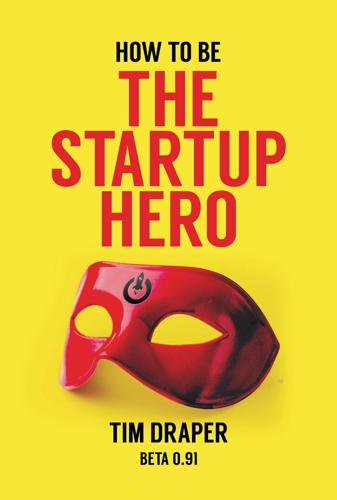
How to Be the Startup Hero: A Guide and Textbook for Entrepreneurs and Aspiring Entrepreneurs
by
Tim Draper
Published 18 Dec 2017
Here is my Startup Hero reading list: Dune by Frank Herbert The Startup Game by William Draper Bionomics by Michael Rothschild Foundation by Isaac Asimov How to Win Friends and Influence People by Dale Carnegie Man and Superman by George Bernard Shaw Zero to One by Peter Thiel Harry Potter and the Philosopher’s Stone by JK Rowling Physics of the Future by Michio Kaku Moneyball by Michael Lewis The Botany of Desire by Michael Pollan The Epiphany by Cree Edwards …and this book you are reading right now! Read How to be The Startup Hero by Tim Draper. Notice there are not a lot of business books listed. A Startup Hero must be well rounded and must understand people, philosophies and cultures.
…
Take it with you and spread the word. I expect that now, when you speak, you will inhale air and exhale our values, our understandings and our credo. Many new markets are available to you where entrenched monopolists have wallowed for years. Technologies like location-specific marketplaces, crowdsourcing, GPS, drones, big data, Bitcoin, blockchain, ICOs, DNA sequencing, CRISPR, solar and other alternative sources of power, and many others will allow you to pursue new markets in the FinTech, EdTech, GovTech, MedTech, TransporTech, and AgTech worlds. Your businesses can take advantage of platforms that people that started those monopolies only dreamed of back then.
…
You can now raise money for a token through an ICO. Dig in and decide if your vision includes a new token or coin. Create a trading platform for private stocks. Build out a networked accounting service. Do anything that improves or replaces government services. Design software that allows the use of big data for healthcare. Figure out a better way to educate people. Reimagine space travel. How can we get to another planet? Reimagine insurance, real estate, concerts or eyeglasses. Go to basic principles. Why does insurance exist? How would a virtual concert work? Should eyeglasses or contacts also be programmable for an augmented reality experience and for zoom and focus?
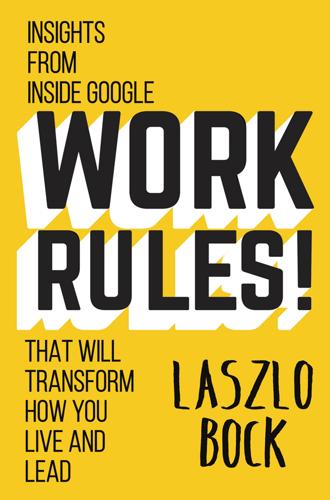
Work Rules!: Insights From Inside Google That Will Transform How You Live and Lead
by
Laszlo Bock
Published 31 Mar 2015
It’s fairly straightforward to know who the better baseball players are. Their performance is observable, since every game is public and recorded, the rules and positions are well understood, producing a consistent standard of assessment, and their wages are known. And despite the years that have passed since Michael Lewis wrote Moneyball, chronicling the Oakland Athletics’ clever application of data analytics to player performance, it’s still fiendishly difficult to agree on who the absolute best are, or to predict who will have a great year. But it’s not hard to identify the top 5 percent or 10 percent of players. As long as money is no object, a team could hire all the players who performed extremely well last year and have a pretty good chance at fielding a championship baseball team.
…
“Surgical Safety Checklist (First Edition),” World Health Organization, http://www.who.int/patientsafety/safesurgery/tools_resources/SSSL_Checklist_finalJun08.pdf. 220. Alex B. Haynes et al., “A Surgical Safety Checklist to Reduce Morbidity and Mortality in a Global Population,” New England Journal of Medicine 360 (2009): 491–499, http://www.nejm.org/doi/full/10.1056/NEJMsa0810119. 221. Michael Lewis, “Obama’s Way,” Vanity Fair, October 2012, http://www.vanityfair.com/politics/2012/10/michael-lewis-profile-barack-obama. 222. Talya N. Bauer, “Onboarding New Employees: Maximizing Success,” SHRM Foundation’s Effective Practice Guidelines (Alexandria, VA: SHRM Foundation, 2010), https://docs.google.com/a/pdx.edu/file/d/0B-bOAWJkyKwUMzg2YjE3MjctZjk0OC00ZmFiLWFiMmMtYjFiMDdkZGE4MTY3/edit?
…
It reduces cognitive load if we provide clear instructions rather than asking them to invent practices from scratch or internalize a new behavior, and this lowers the chance that an extra step might discourage them from taking action. Even the president of the United States limits the volume of things he needs to think about, so that he can focus on important issues, as he explained to Michael Lewis in Vanity Fair: “ ‘You’ll see I wear only gray or blue suits,’ [President Obama] said. ‘I’m trying to pare down decisions. I don’t want to make decisions about what I’m eating or wearing. Because I have too many other decisions to make.’ He mentioned research that shows the simple act of making decisions degrades one’s ability to make further decisions.
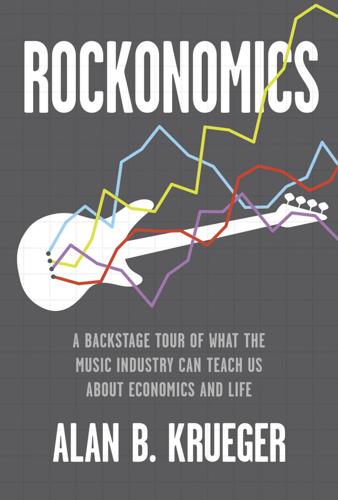
Rockonomics: A Backstage Tour of What the Music Industry Can Teach Us About Economics and Life
by
Alan B. Krueger
Published 3 Jun 2019
Although exactly what these figures include (advance, recording costs, promotional spending, etc.) is unclear—and one should always be a tad skeptical given the penchant of managers, lawyers, and publicists to exaggerate their clients’ deals—the improved economic position of record labels, after a decade of distress, has undoubtedly intensified competition. I asked Tom Corson whether the availability of statistical information on new artists from social media and streaming services—along with efforts by record labels to apply Moneyball techniques to predict future stars—has improved the odds of success (recall that historically only one or two of every ten artists signed cover their costs). On reflection, he said that perhaps the odds have increased to 2.5 in 10.14 But then he pointed out that costs were rising given the bidding war.
…
Thus, TME yields complementary benefits to Tencent’s other activities, just as Amazon’s Alexa provides a complementary portal to drive demand for Amazon’s core retail business, and Apple Music is complementary to the manufacturer’s core device business. With hundreds of millions of users, China’s streaming platforms collect enormous volumes of Big Data on users’ preferences and listening habits, which can be used to tailor recommendations to users, target concert tours, and guide music production. Because the services are new, however, the use of Big Data is still in its infancy. Although China is one of the largest and fastest-growing music markets in the world, TME investor Sam Jiang noted that the total amount of money spent on online music in China “is about the same size as one real estate project in a tier-one city.”
…
When Klein met Bobby Darin at Kirshner’s wedding, he immediately promised to get the singer $100,000 if he hired Klein to audit his royalty payments. Luck—factors beyond your control—affect where you are born, who your parents are, where you go to school, your health, and nearly every other aspect of life. As Michael Lewis, the author of Liar’s Poker and a dozen other bestsellers, told the graduating class of 2012 at Princeton University in his baccalaureate speech: You are the lucky few. Lucky in your parents, lucky in your country, lucky that a place like Princeton exists that can take in lucky people, introduce them to other lucky people, and increase their chances of becoming even luckier.

What to Think About Machines That Think: Today's Leading Thinkers on the Age of Machine Intelligence
by
John Brockman
Published 5 Oct 2015
This illusion, in direct contradiction to empirical research, means that we continue to choose employees the same way we always did. We size them up, eye to eye. One domain where some progress has been made in adopting a more scientific approach to job-candidate selection is sports, as documented by the Michael Lewis book and movie Moneyball. However, it would be a mistake to think there has been a revolution in how decisions are made in sports. It’s true that most professional sports teams now hire data analysts to help them evaluate potential players, improve training techniques, and devise strategies. But the final decisions about which players to draft or sign, and whom to play, are still made by coaches and general managers, who tend to put more faith in their gut than in the resident geek.
…
That has come from the steady Moore’s Law doubling of circuit density every two years or so, not from any fundamentally new algorithms. That exponential rise in crunch power lets ordinary-looking computers tackle tougher problems of Big Data and pattern recognition. Consider the most popular algorithms in Big Data and machine learning. One algorithm is unsupervised (requires no teacher to label data). The other is supervised (requires a teacher). They account for a great deal of applied AI. The unsupervised algorithm is called k-means clustering, arguably the most popular algorithm for working with Big Data. It clusters like with like and underlies Google News. Start with a million data points. Group them into 10 or 50 or 100 clusters or patterns.
…
These exciting modern services often camp it up with “female” vocal chat. They talk like Turing women—or, rather, they emit lines of dialog somewhat like voice-over actresses. However, they also offer swift access to vast fields of combinatorial Big Data that no human brain could ever contain, or will ever contain. These services are not stand-alone Turing Machines. They’re amorphous global networks, combing through clouds of Big Data, algorithmically cataloging responses from human users, providing real-time user response with wireless broadband, while wearing the pseudohuman mask of a fake individual so as to meet some basic interface-design needs.